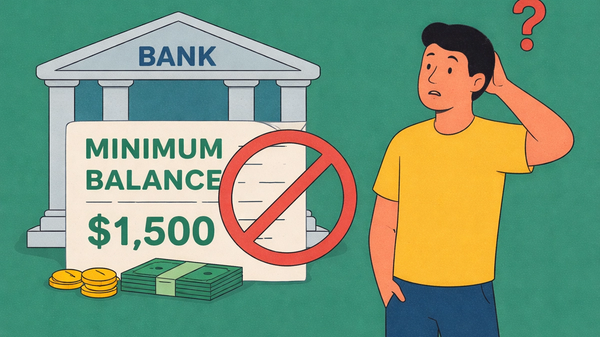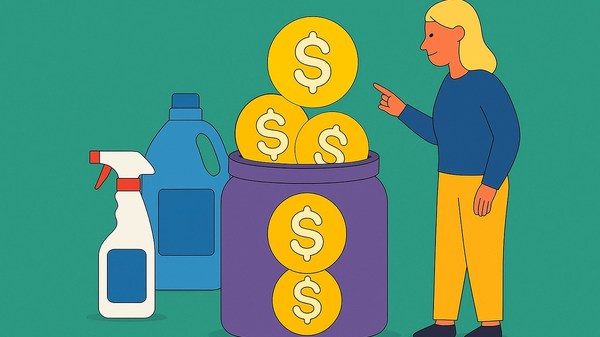In this post, we’ll explain what dollar-cost averaging is, when you might use this investment strategy, and how it can help you start investing.
Key takeaways:
- Dollar-cost averaging (DCA) is an investing strategy where an investor invests a larger sum of money over a series of equal, regularly spaced investments.
- While lump sum investing comes out ahead of DCA two-thirds of the time, DCA can be psychologically beneficial.
- If you have a larger amount of cash that you prefer to DCA, Passiv makes it easy to do so with our new Cash Management rules.
What is dollar-cost averaging?
Dollar-cost averaging (DCA) is an investing strategy where an investor has a larger sum of money that they choose to invest over a series of regularly spaced allocations instead of at once. This can be a beneficial strategy because, while the stock market has historically always gone up over longer time frames, it is inherently volatile in the short-term.
Note that “true” DCA is different from contributing regularly to your investments with every paycheck. Specifically, in true DCA, you already have all the money you plan to invest, but you’re choosing to invest it later. When you contribute with every paycheck, you’re investing new cash as you earn it.
In both cases, you benefit from not having to worry about timing the market. You set a date to contribute and then you just do it.
In both cases, you benefit from “buying the dip” and scooping up more assets at lower prices, while less experienced or less disciplined investors may be afraid to put money into a falling stock market.
Dollar-cost averaging vs lump sum investing example
To help put this concept into concrete terms, here’s an example situation. Let’s assume you’re putting all your money into one broad market ETF that only pays out dividends once a year, in December, to keep the math simple.
Let’s say Person A (we’ll call her Sara) immediately invests $10000 in an ETF that is priced at $50 per unit. This gives her 200 units in exchange for her $10000. However, she had some bad luck – it’s February 2020 and soon after, the uncertainty surrounding the COVID-19 pandemic sends shockwaves through global stock markets. In March 2020, the ETF unit price drops to $25. Now, Sara’s 200 units are worth a total of $5000.
By May, the stock market improves, the unit price is $45, and now Sara’s 200 units are worth $9000.
On the other hand, Person B (let’s call him Dave) invests his $10000 in five monthly allocations of $2000 each. In January, he bought $2000 worth of units while the unit price was $45. In February, the price went up to $50 and Dave invested another $2000. He stuck to his investing plan until May, and you can see the result below.
By investing the same amount of money monthly, Dave’s $2000 bought him more units when the unit price was low, and fewer units when the unit price was higher. This pulls down the average price paid per unit over time.
While the above example shows how DCA can protect your portfolio during a volatile market, a Vanguard study (PDF) showed that DCA only comes out ahead of lump sum investing one-third of the time. In the next example, you’ll see how easy it is for lump sum investing to beat DCA.
It’s possible that Sara got lucky and invested all her cash right at the bottom of the market. In this case, she bought 400 units at $25 with $10000. When the price goes back up to $45, Sara’s investment is worth much more than Dave’s, and she has more units in total. Although this is a great hypothetical result, no one has a crystal ball that lets them see when market highs and lows will be. To see the results of even more diverse hypothetical situations, check out this article.
Why your brain likes dollar-cost averaging
As shown in this Vanguard study, lump sum investing beats dollar-cost averaging across 1 year about two-thirds of the time. (If you extend DCA to three years, it only beats lump sum investing 10% of the time.)
Overall, mathematically, you’re likelier to be better off with lump sum investing. But when people compare lump sum investing and dollar-cost averaging, they leave an important third possibility out of their calculations: not investing your money at all due to fear.
If your fear of the stock market dropping right after a lump-sum investment keeps you from investing for years, then you’ll be losing out on potential gains for that whole time. Your portfolio will experience a “cash drag” and your allocation may not match your risk tolerance until you invest this money.
The human brain is a weird thing, and it dislikes losses much more strongly than it enjoys equivalent gains. When you dollar-cost average, you’re likely lowering your maximum possible return by a few percentage points but in exchange, you reduce the likelihood of experiencing a large (paper) loss. For the brain, this feels like a good calculated risk to take.
If dollar-cost averaging calms your fears, then using this investing strategy may help you invest all your money before you would have felt “ready” if you were set on making a lump sum investment. So even if probability says that you’ll come out ahead with lump sum investing, don’t discount DCA if it helps you wade into the stock market earlier and lets you sleep soundly at night.
“That sounds great, but DCA sounds complex to execute”
One downside to DCA is the complexity involved. You’ll need to decide how often you’ll invest, what amounts you’ll invest each time, and calculate how much of each asset you can buy. However, once you decide how much you’ll invest and when, Passiv can take care of all the calculations for you. All you need to do is set up a Cash Management rule, described below.
Passiv’s Cash Management tool gives you even more control over your money. There are two types of cash rules you can create: “retain at least” and “allocate at most”.
Allocate at most
If you’re looking to dollar-cost average a larger sum, “allocate at most” is the rule for you. To create one of these rules, click on the Group Settings tab in any group. Under Cash Management, click Add Rule.
From there, simply set the rule to “allocate at most” and pick the account you want the rule to apply to, the relevant currency, and the maximum amount of cash you want to allocate at one time. Now, trades will only be made up to your set maximum allocation amount.
Retain at least
On the other hand, the “retain at least” cash rule will let you set a minimum amount of cash that will be held within an account. To set up your own “retain at least” rule, navigate to Cash Management under Group Settings. Select the relevant account and currency, choose “retain at least” from the dropdown menu, and set a dollar amount you want to retain. Now, Passiv’s calculations will include this new rule.
In summary, when you choose to DCA, you’re attempting to decrease your risk, which comes hand-in-hand with decreased reward. In exchange for short-term downside protection, you’re exchanging some long-term upside potential. Ultimately, it’s up to you whether you choose to invest in one lump sum or dollar-cost average.
Finally, remember that the most important thing you can do for your investments is to keep saving and investing money regularly. Passiv helps you grow your portfolio by sending you cash and portfolio drift notifications, doing automated allocation calculations, letting you make trades with one click, and more.


